Elephants at the Water Lily Pond
And their Environment
Artwork by Ing-On Vibulbhan-Watts
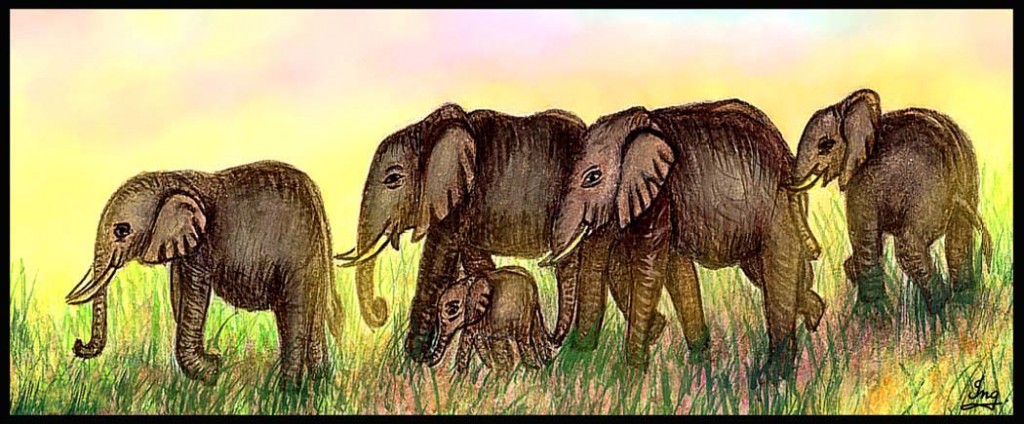
As the sun turns towards the horizon
The evening begins
A herd of elephants are marching
To their favorite place
Their stomachs are more than half full
Their legs are tired
And the skins are baked
From the afternoon sun
Fresh cool water
Helping to quench their thirst
Spraying water on their heated skins
Pleasure for all
Especially fun for young ones
Ing-On Vibulbhan-Watts, Tuesday, June 8, 1999
As the golden rays of sun reflect on the water
It turns the pond and the elephants gold
Bright pink water lilies
Contrasting the large circular green leaves
Accenting the beauty of nature
When nature is in harmony
Peace is present
Humans should be willing to share
This peaceful existence
With all other livings creatures of the world
Humans can make peace with themselves
And other animals
Only humans are capable of
Making the world better or worse
No other creatures can
Are we ready to make it better?
Ing-On Vibulbhan-Watts, Tuesday, June 8, 1999
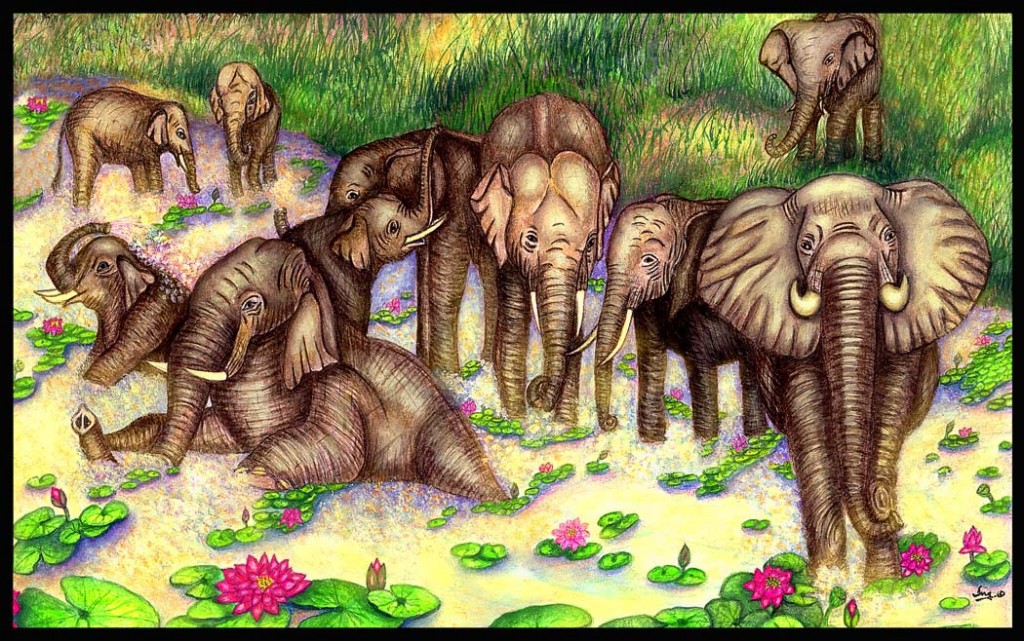
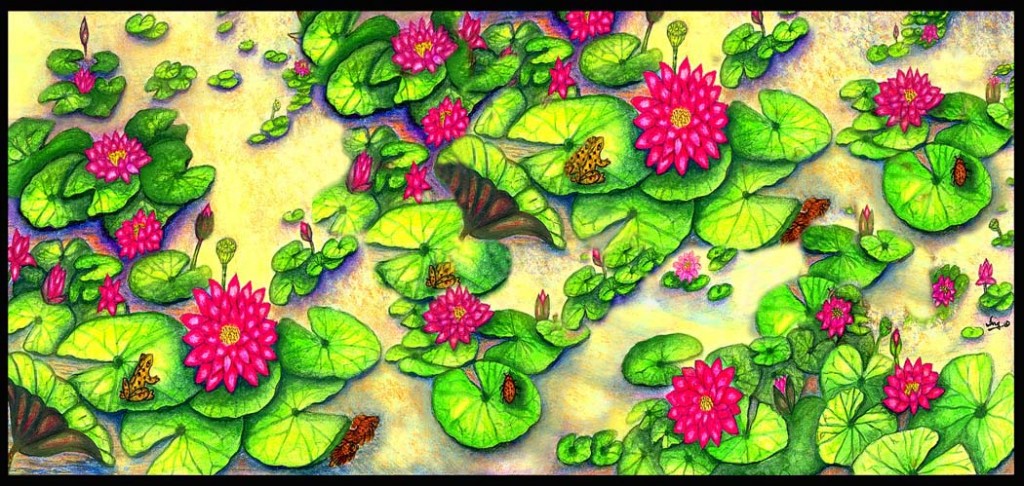
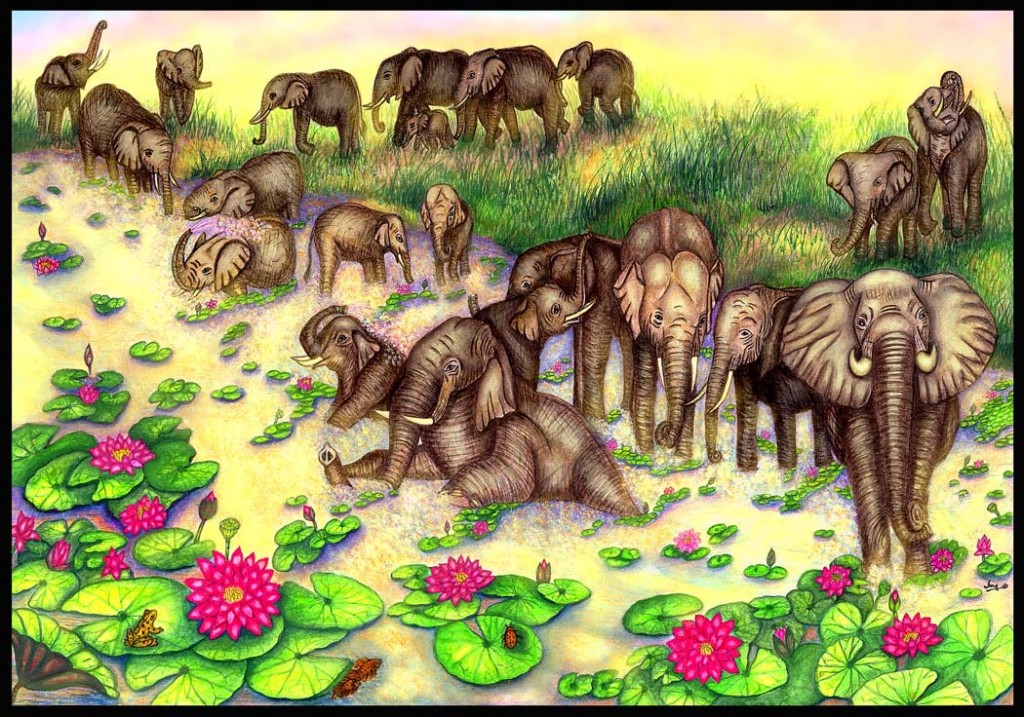 I produced Elephants at the Water Lily Pond in 1999, because I heard about deforestation. I have been very concerned about humans invading the animals’ habitats by cutting down the forests for housing and farm land. Some humans do not believe in global warming that is caused from mismanaging the environment so they go on making their wealth from destroying the land for mining and the forest for the wood products. Some trees are cut down to produce throw away chopsticks and other wasteful products.
I produced Elephants at the Water Lily Pond in 1999, because I heard about deforestation. I have been very concerned about humans invading the animals’ habitats by cutting down the forests for housing and farm land. Some humans do not believe in global warming that is caused from mismanaging the environment so they go on making their wealth from destroying the land for mining and the forest for the wood products. Some trees are cut down to produce throw away chopsticks and other wasteful products.
Ing-On Vibulbhan-Watts, Sunday, February 02, 2014
Please read the following article from National Geographic about the plight of elephants:
Photos: Elephants Moved Across Africain Risky Operation
Two of the rare mammals died in the process, group says.
An elephant wakes after being tranquilized outside of Daloa,Ivory Coast.
PHOTOGRAPH BY SIA KAMBOU, AFP/GETTY
Angie McPherson
Published January 31, 2014
Originally deemed as an impossible task, staff with the International Fund for Animal Welfare (IFAW) have successfully transported four wild African forest elephants across the Ivory Coast (Cote D’Ivoire).
The challenging relocation was conducted to relieve growing conflict between the large animals and villagers in Daloa, a town near the elephants’ home in Marahoue National Park.
Four of the elephants made it, two of the rare mammals died—a loss that’s high but “not surprising” for this type of risky operation, said Joyce Poole, co-founder of the conservation group ElephantVoices. (Related: “Success and Tragedy: IFAW’s Project to Relocate Elephants in Cote d’Ivoire.”)
PHOTOGRAPH BY MICHAEL BOOTH, IFAW
An African forest elephant hides in the forests outside of Daloa.
Not only is it hard to move one of the largest animals in the world, it’s also difficult to find the notoriously shy African forest elephant (Loxodonta cyclotis), which was recently recognized as a distinct subspecies of African elephant (Loxodonta africana). (See pictures of forest elephants.)
One of the rarest subspecies on the continent, there are an estimated 60,000 to 150,000 African forest elephants left in the wild, according to Cornell University. The International Union for Conservation of Nature lists the species as vulnerable.
“Translocating elephants [as a] solution is only used as last resort—the operation is risky and very expensive,” said Céline Sissler-Bienvenu, a director at the IFAW.
“Instead of killing these elephants, which are the country’s national emblem, they wanted to find a humane solution, and knew we had moved elephants in Malawi before,” said Sissler-Bienvenu.
PHOTOGRAPH BY MICHAEL BOOTH, IFAW
An African forest elephant is shot with a tranquilizer dart from a helicopter.
Elephants vs. Villagers
Deforestation in Marahoue National Park is one reason that conflicts escalated between elephants and humans. According to Sissler-Bienvenu, an estimated 80 percent of the park has been converted to agriculture since the Ivorian Civil War began in 2002.
Without homes or food, the restless and hungry elephants began to roam, becoming dangerous neighbors for the residents of Daloa and other surrounding villages: The animals have stomped three people to death and eaten much of the local crops. (Listen to an interview about living with lions in the Serengeti.)
When villagers threatened to kill the encroaching species, the Ivory Coast government intervened in April 2012, asking the IFAW to help resolve the conflict.
So, to protect the pachyderms, the IFAW translocated four males, tranquilizing them and transporting them in trucks about 310 miles (500 kilometers) from Daloa to Asagny National Park, a federal wildlife reserve that consists of 19,400 hectares (47,938 acres) of forest and wetlands along the Gulf of Guinea.
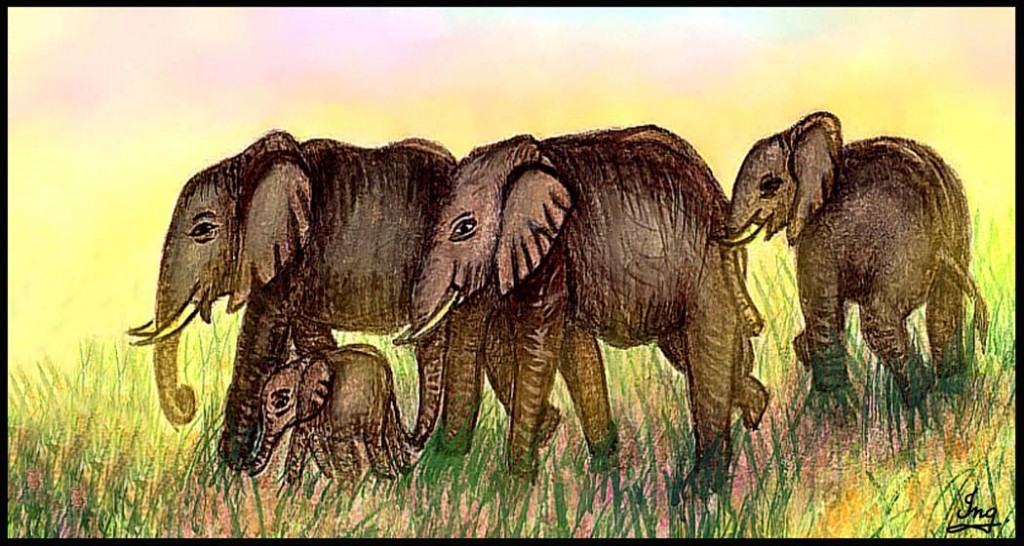
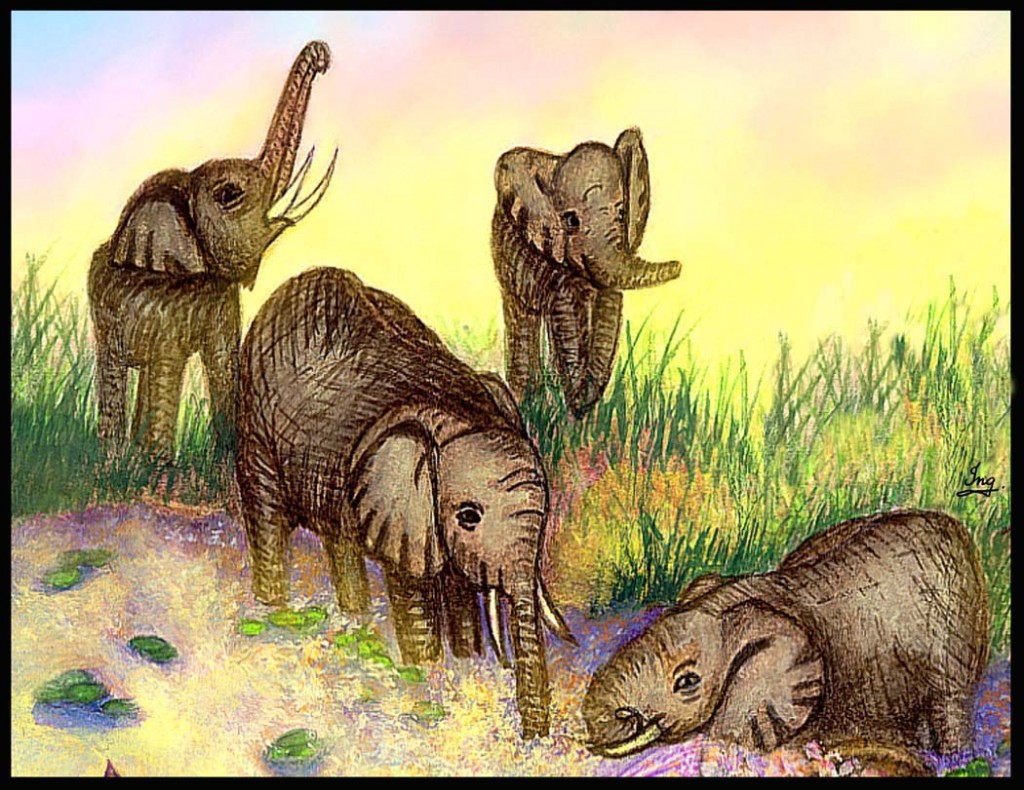
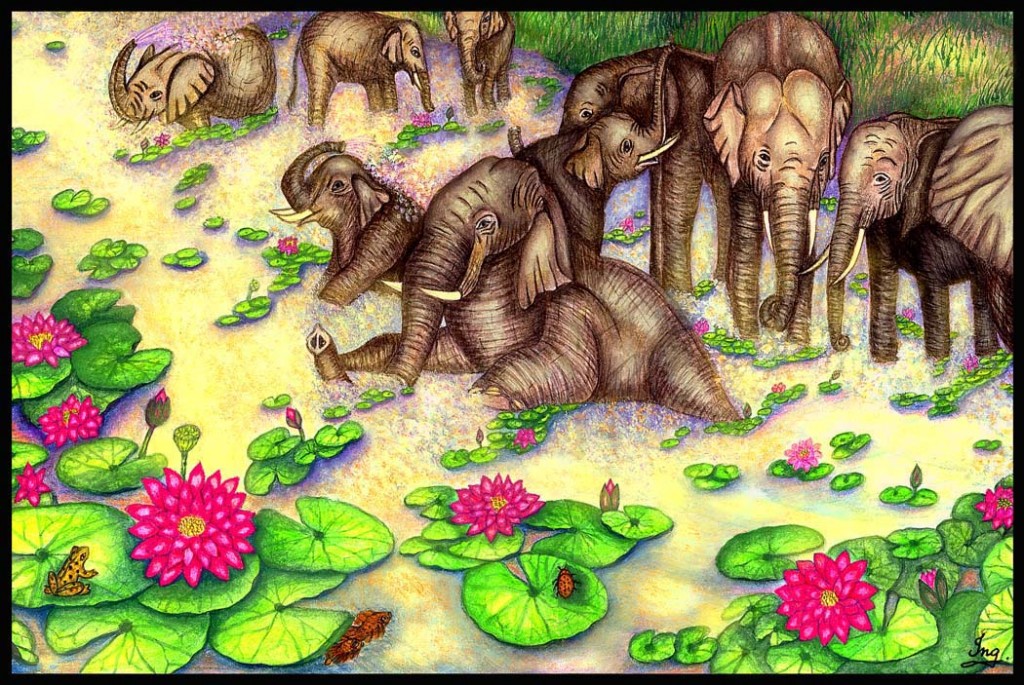
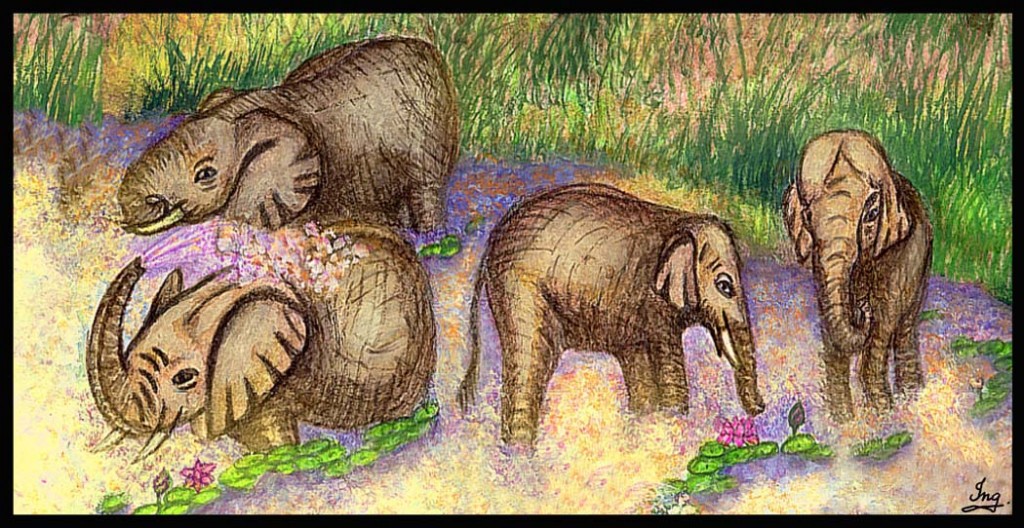
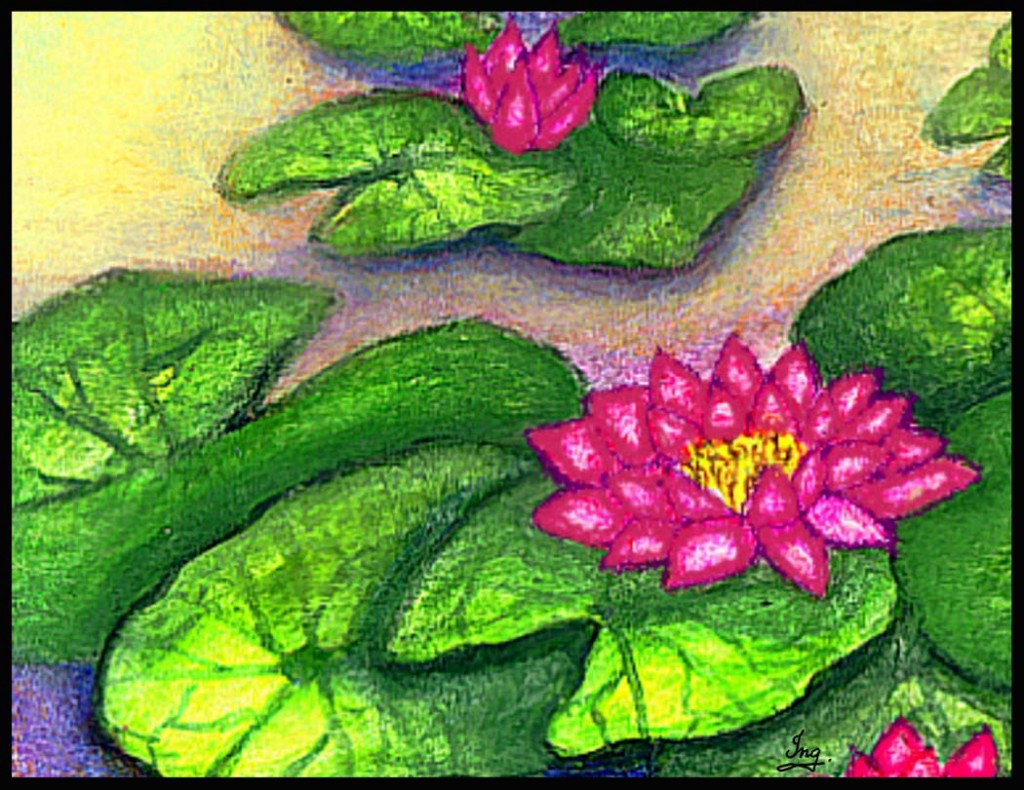
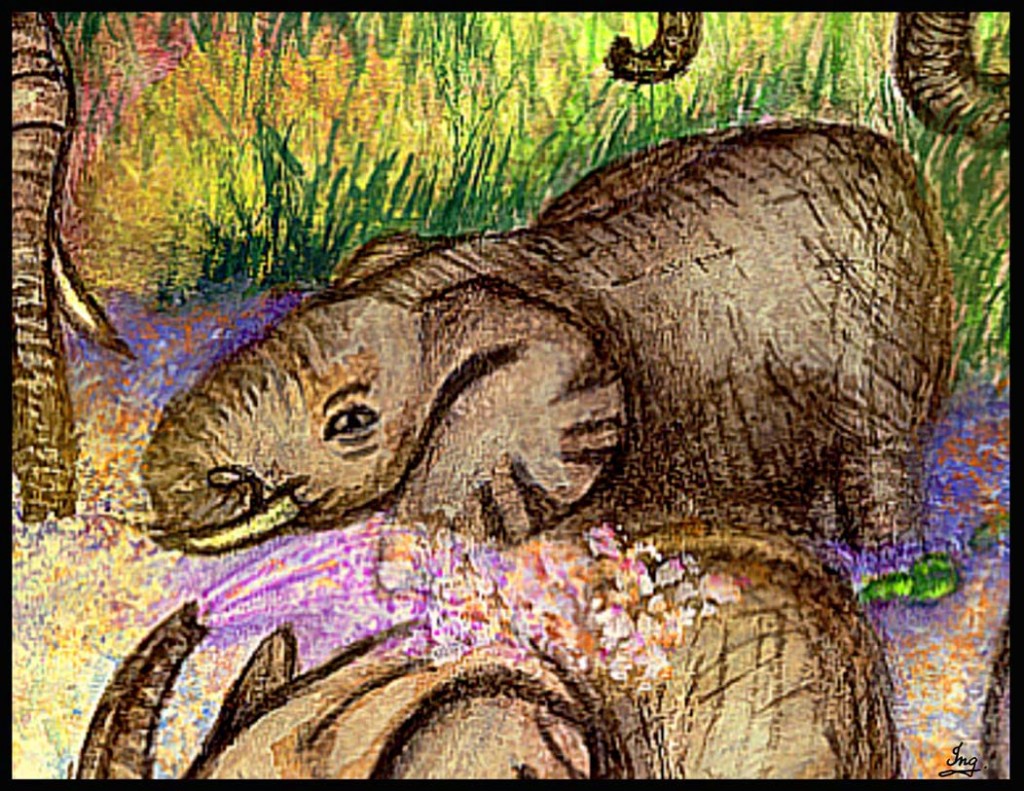
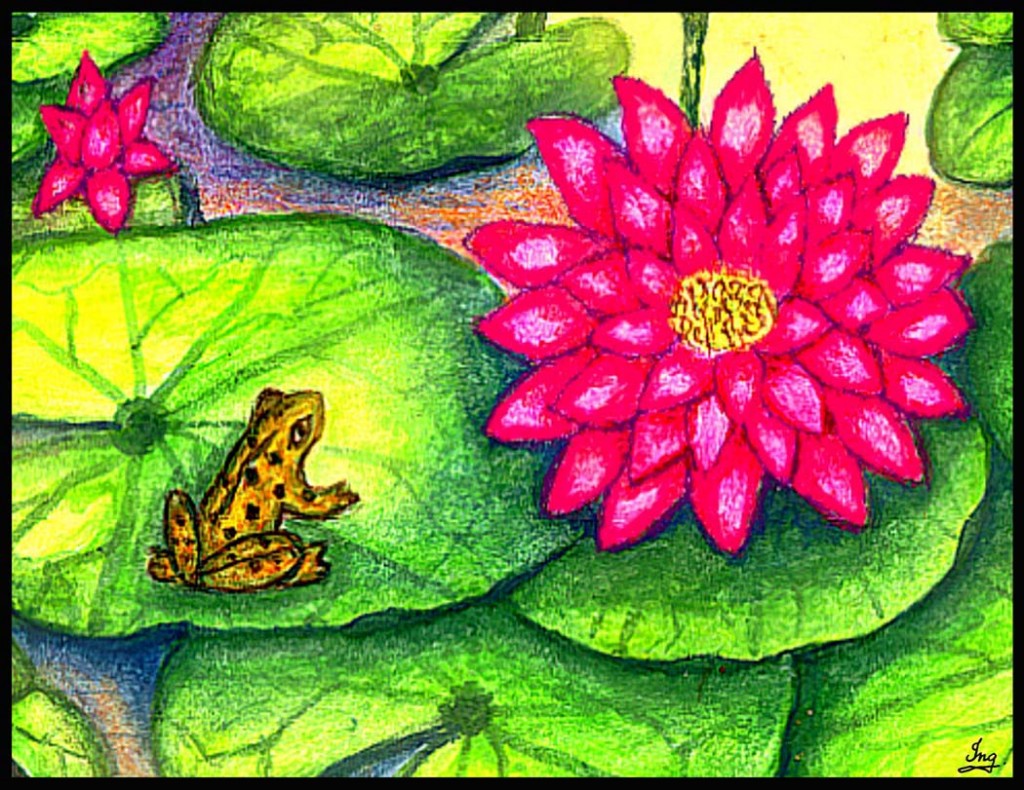
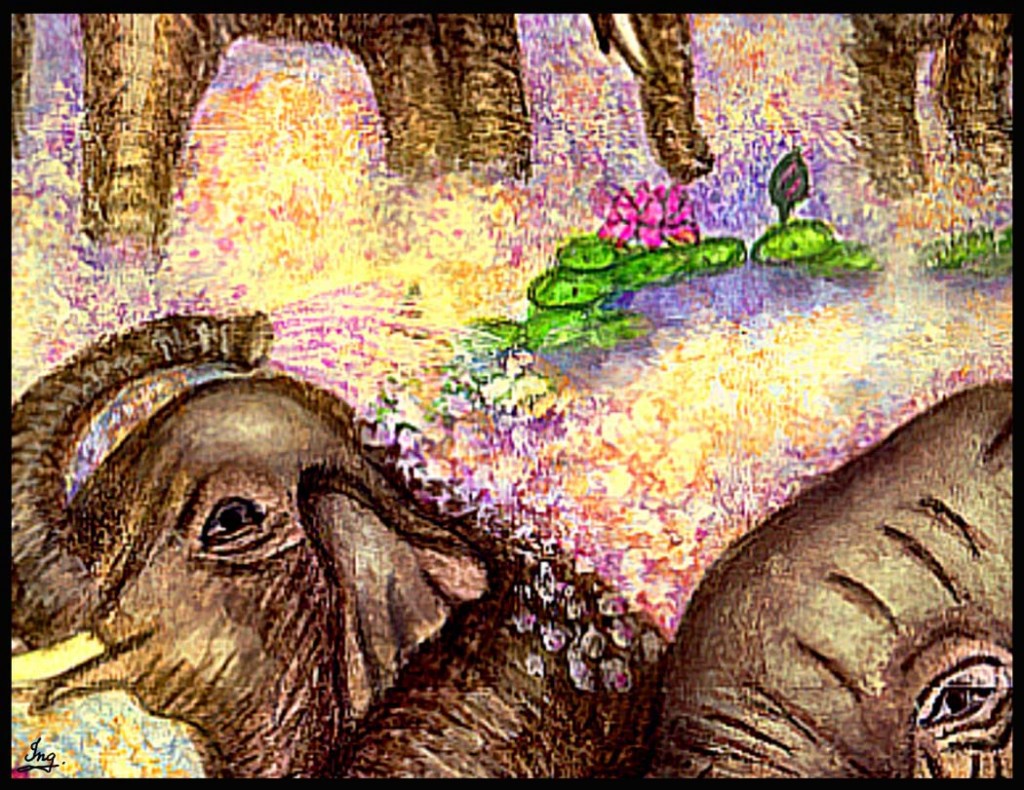
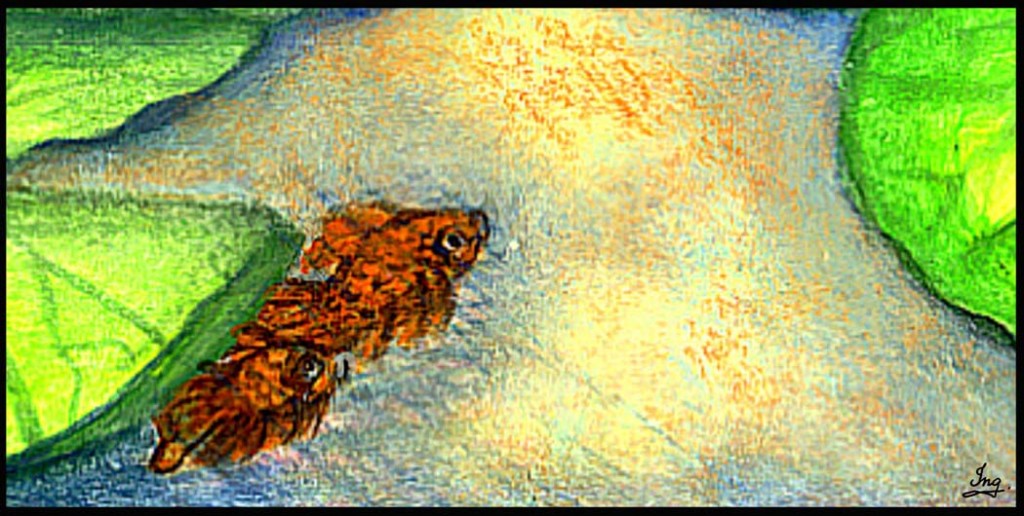
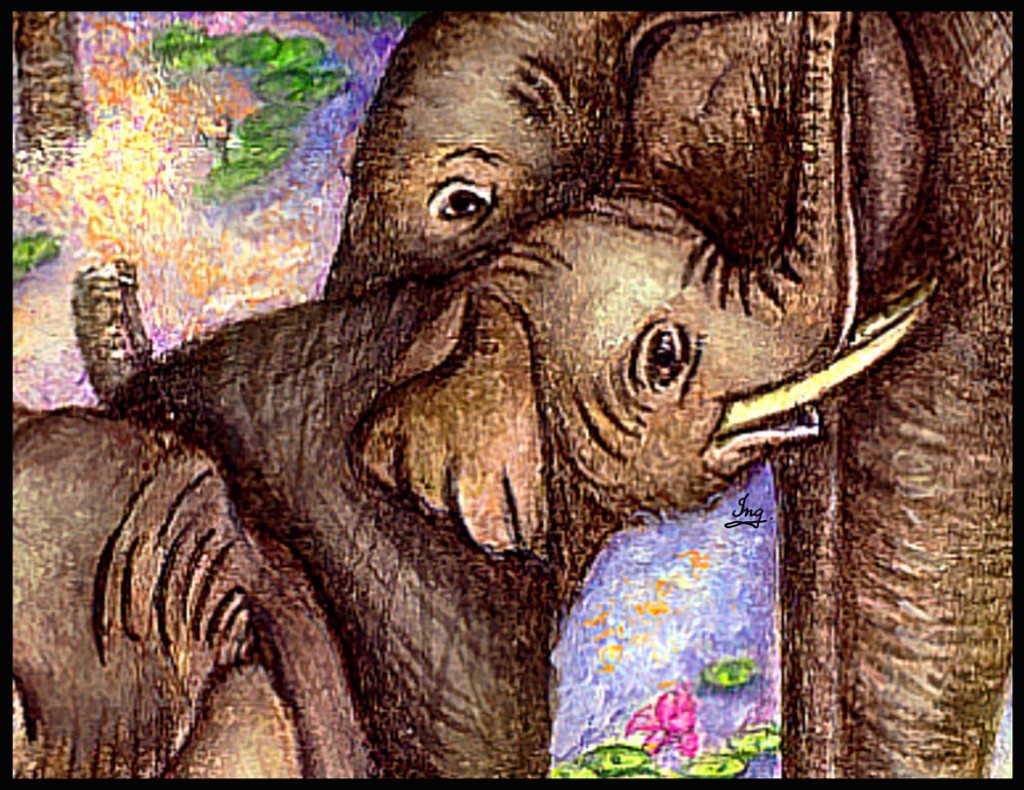
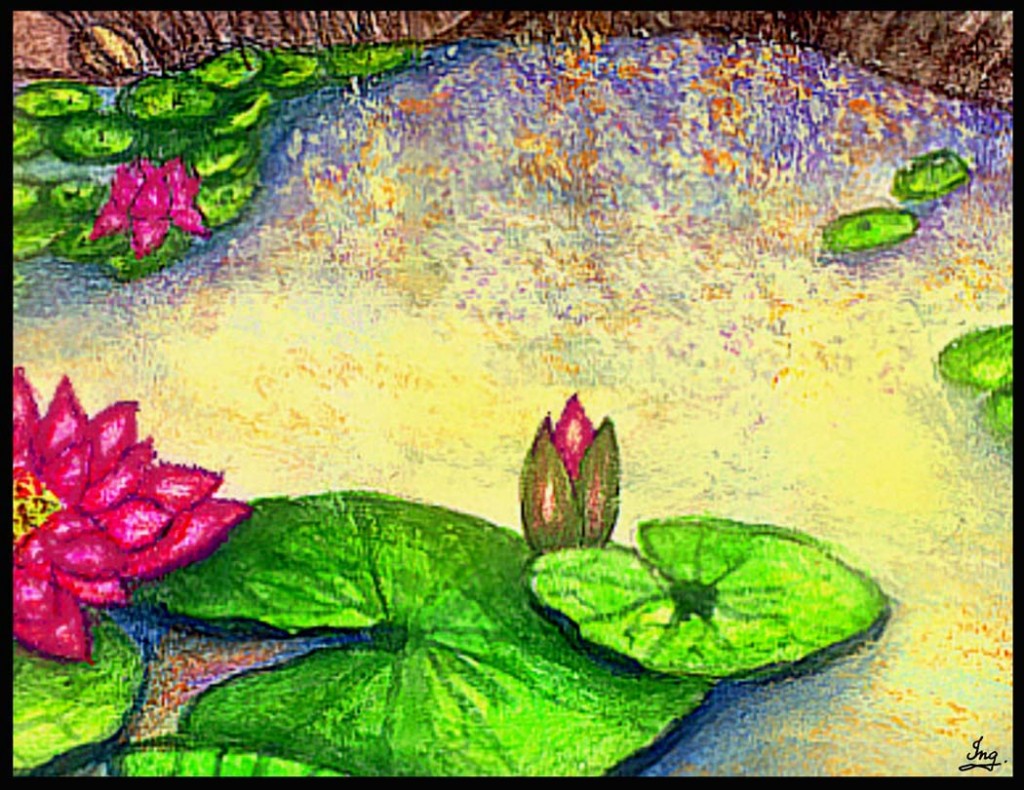
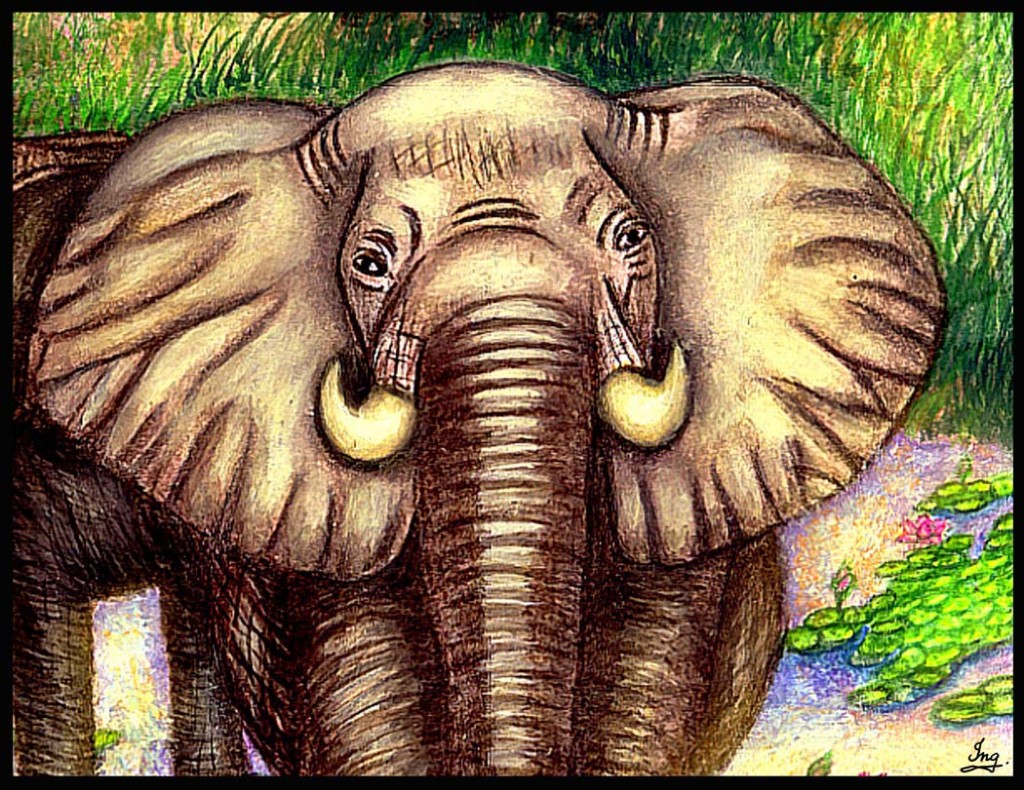
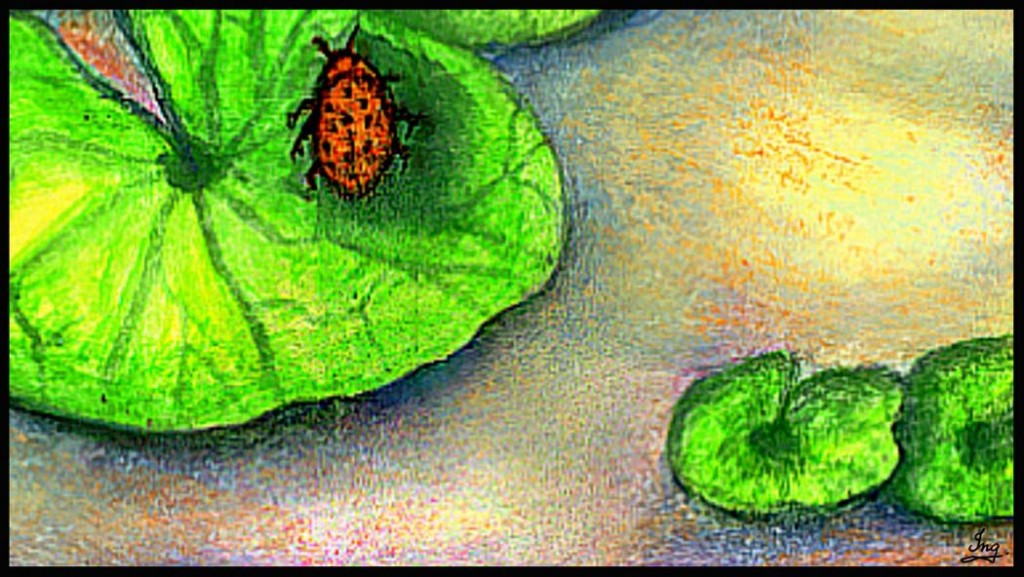

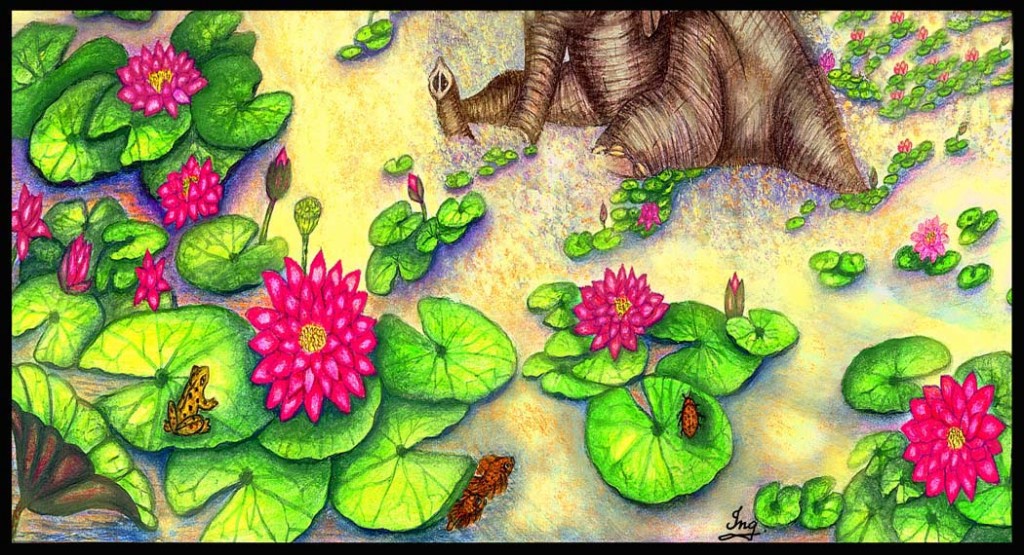

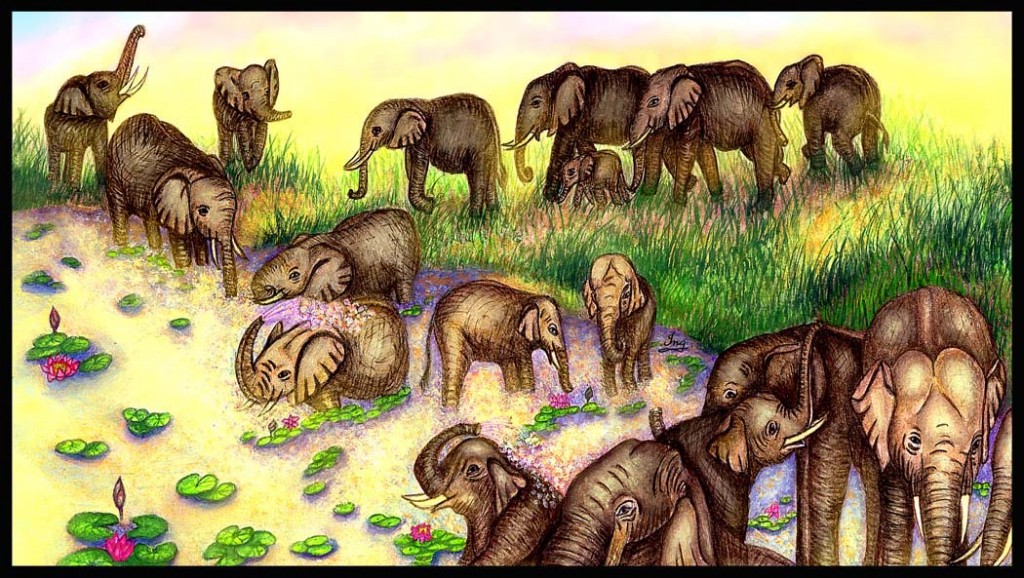
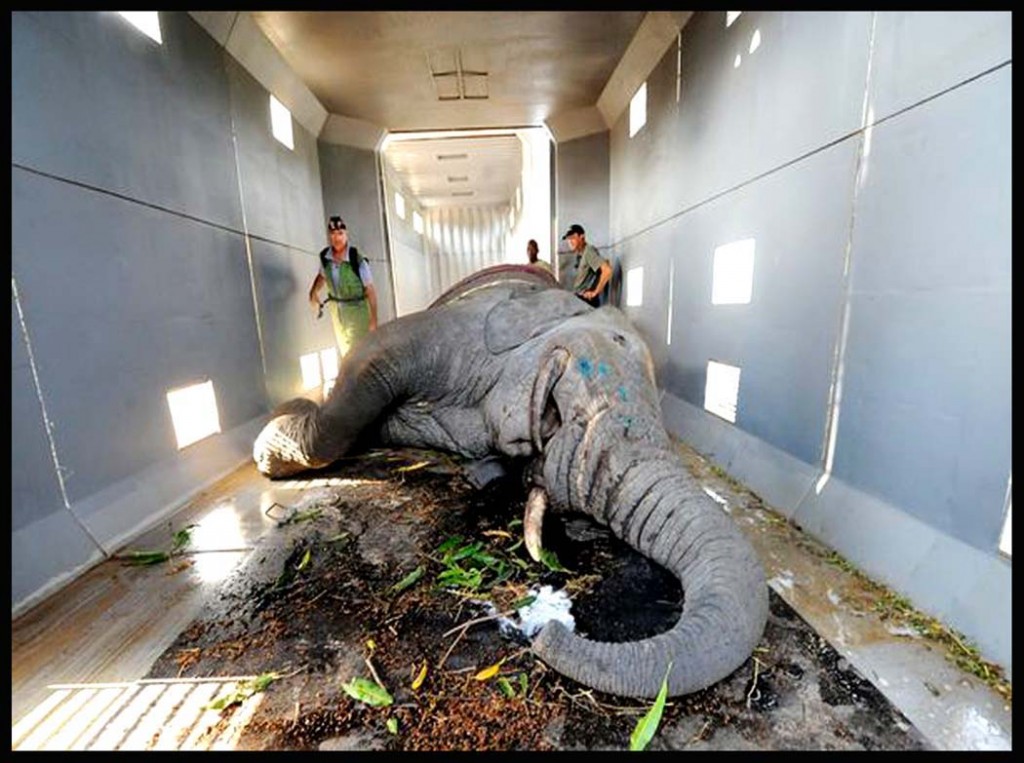
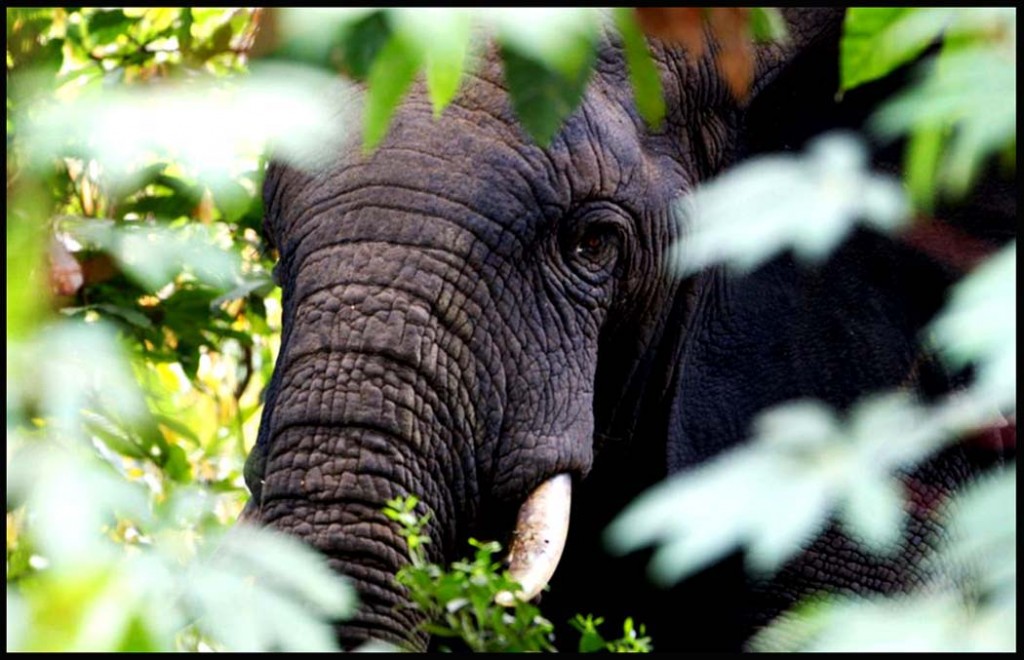
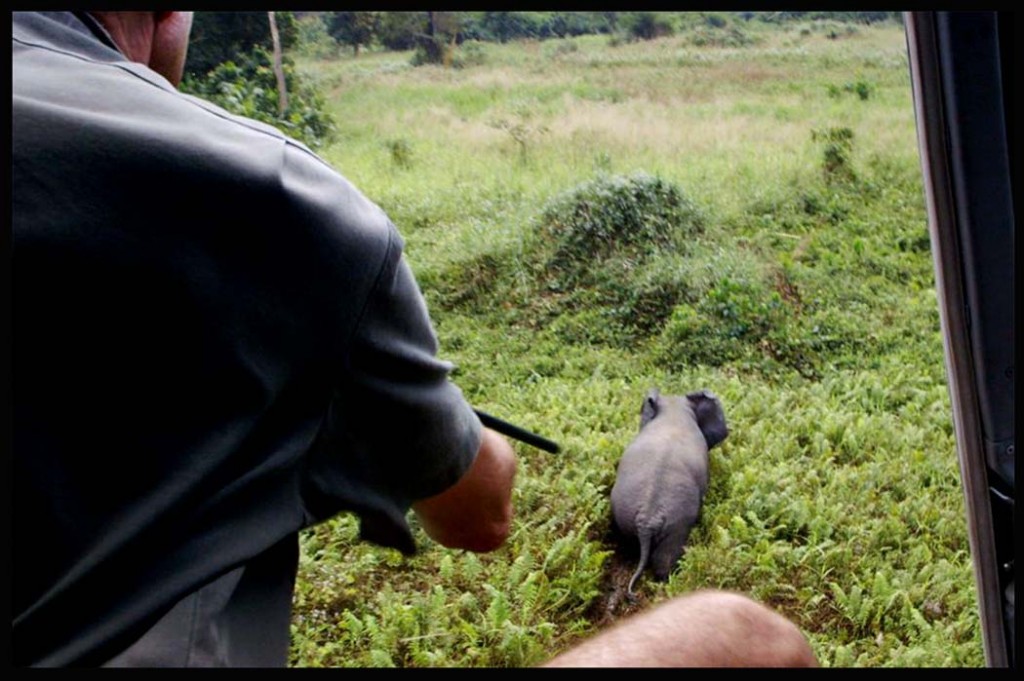
Leave a Reply